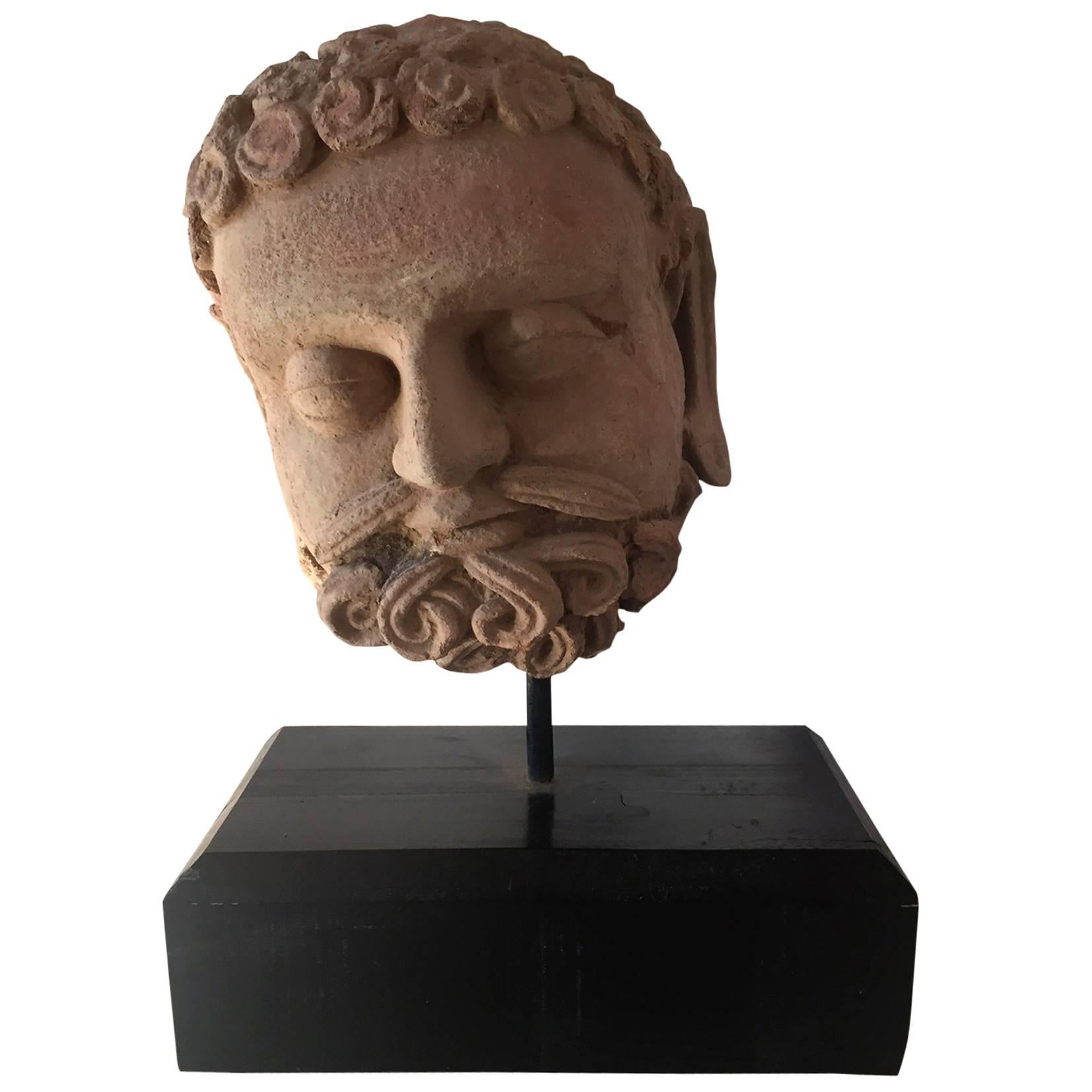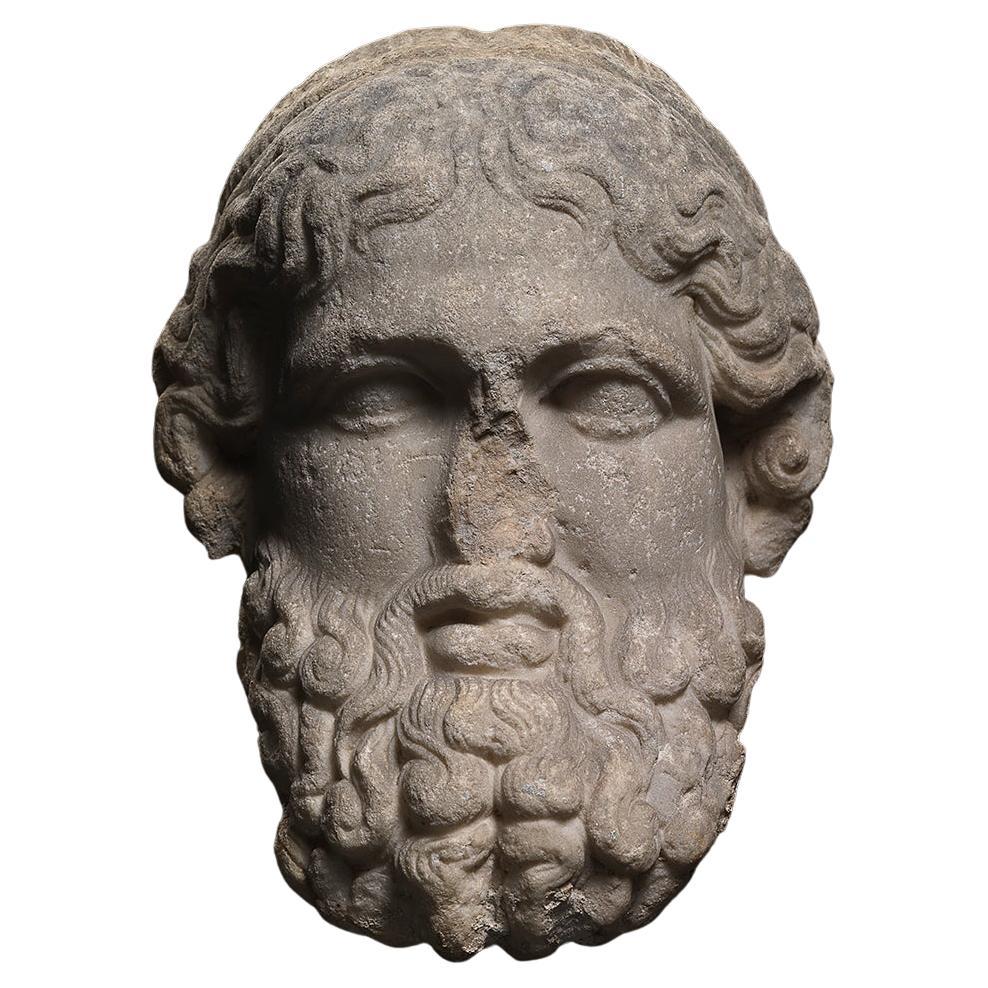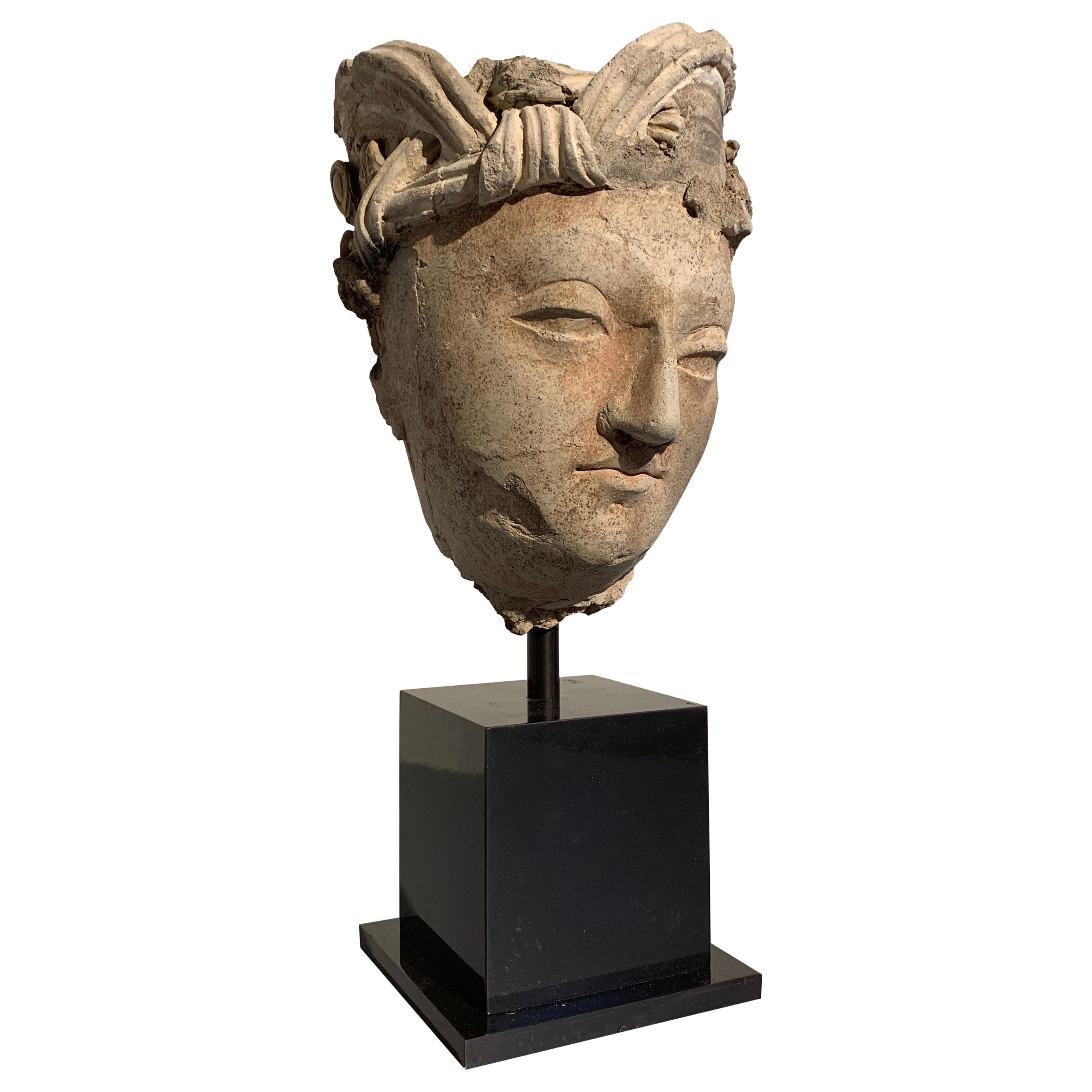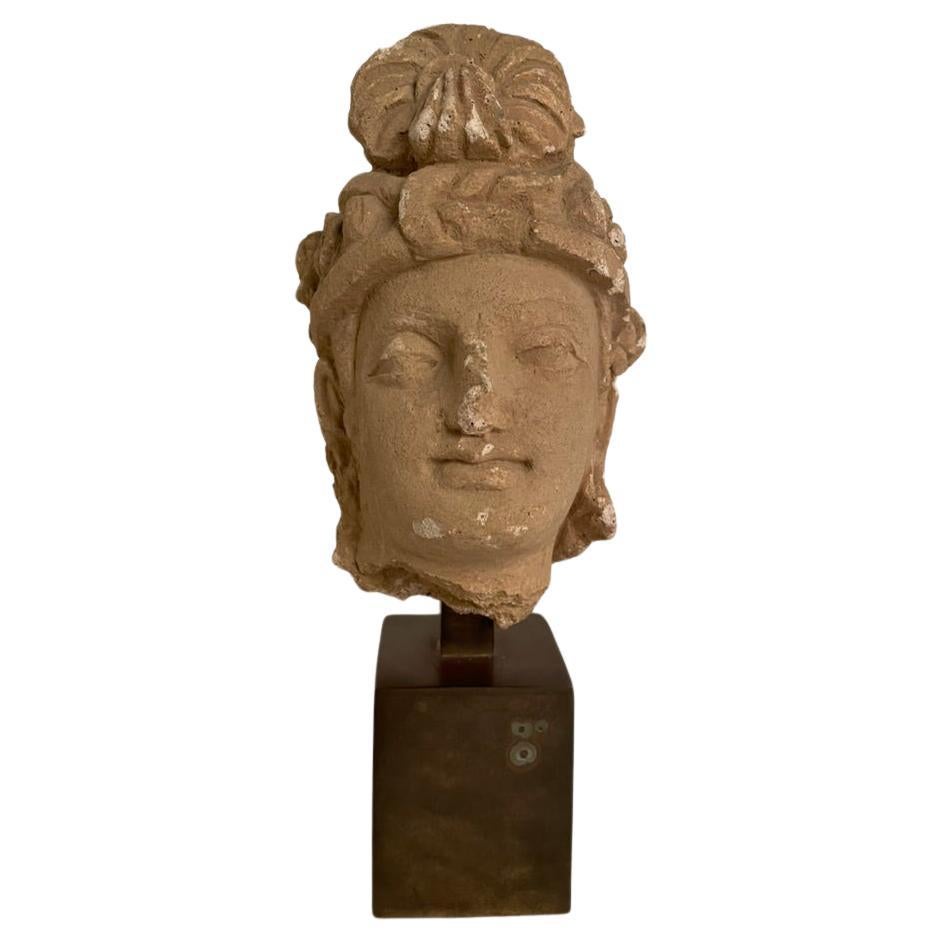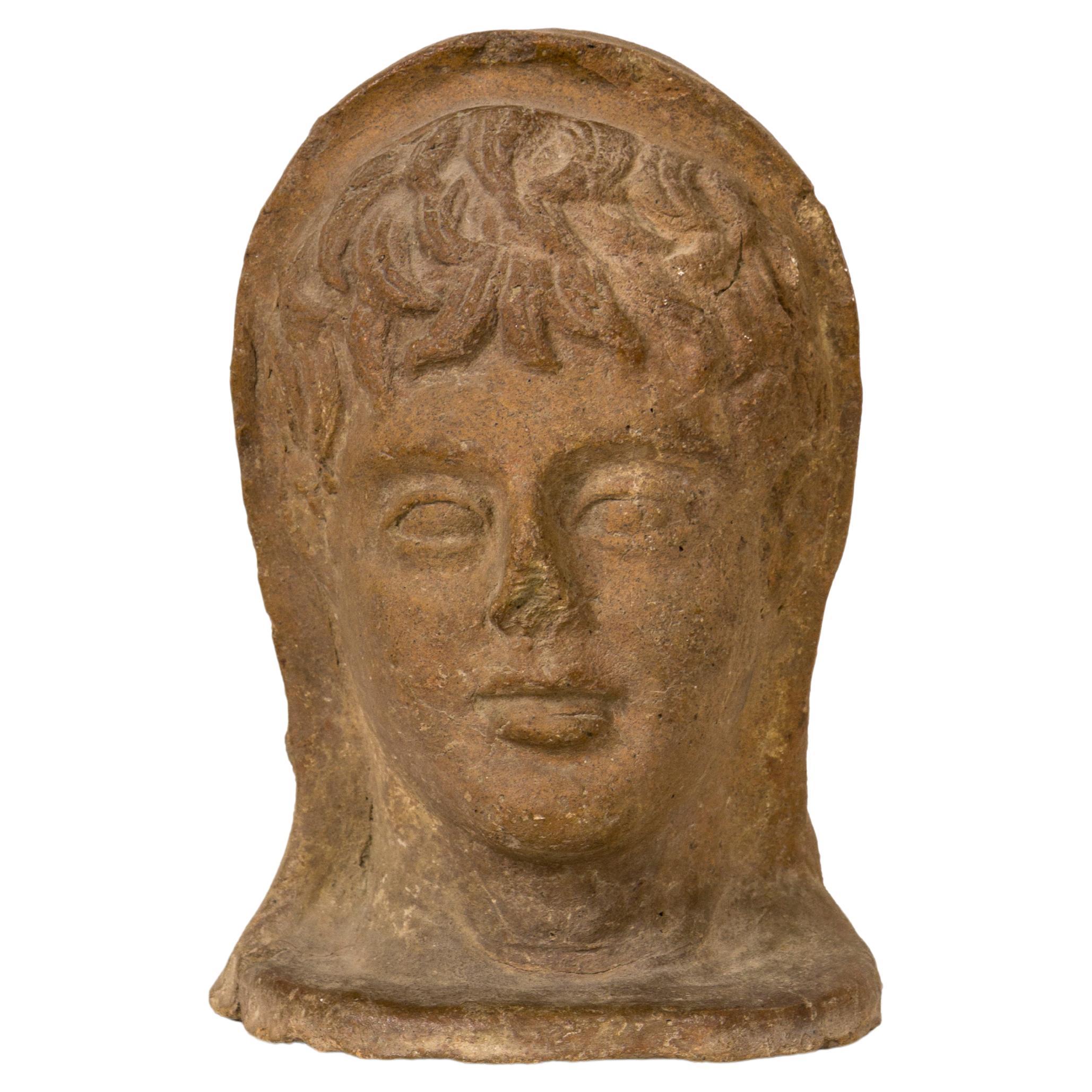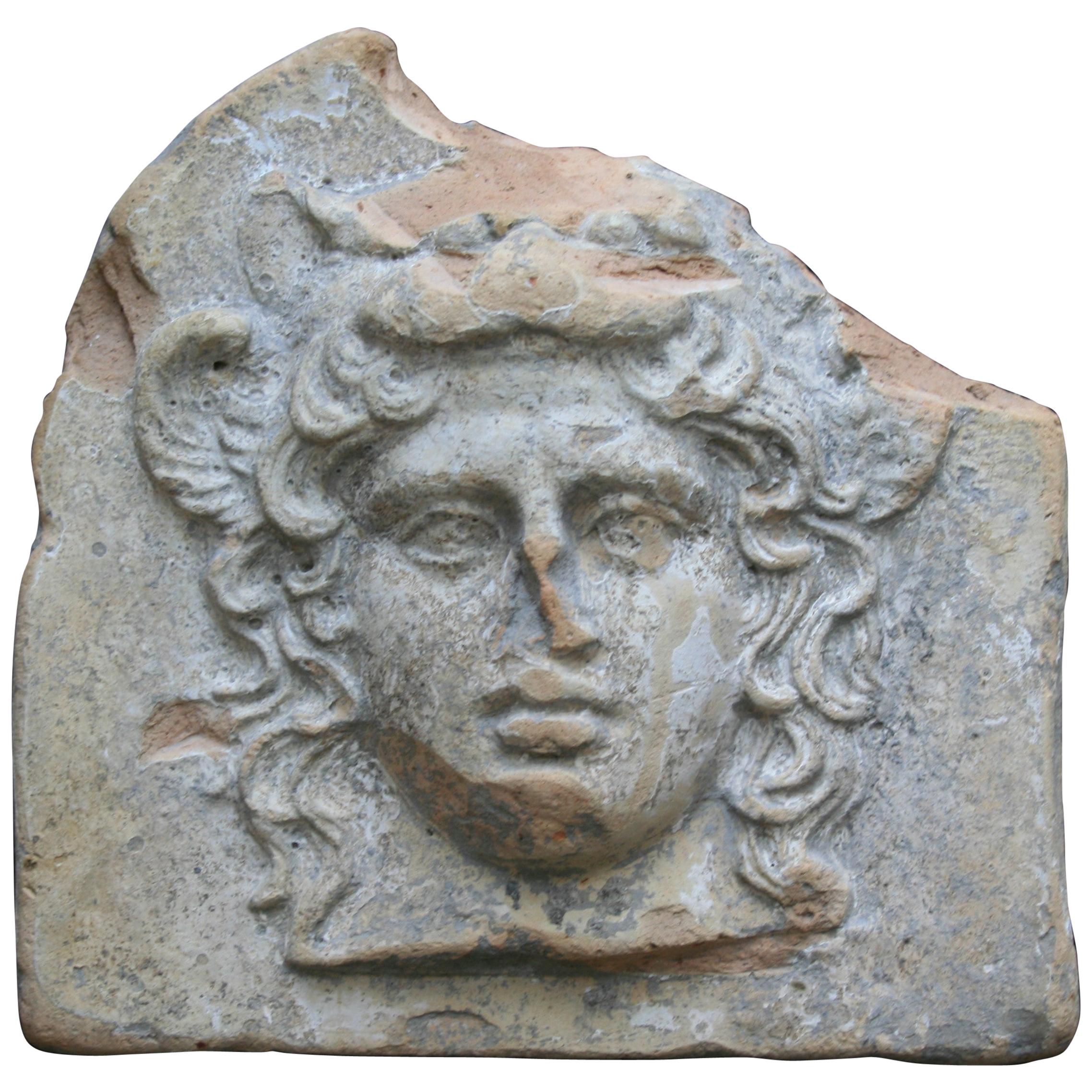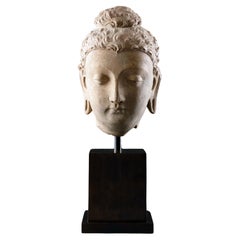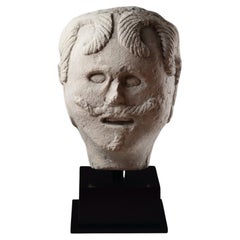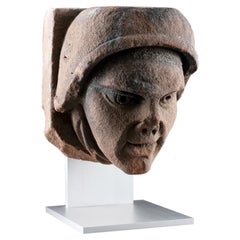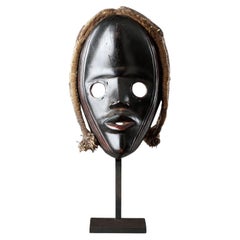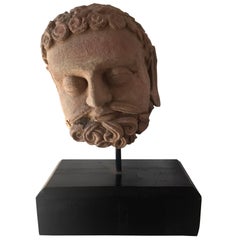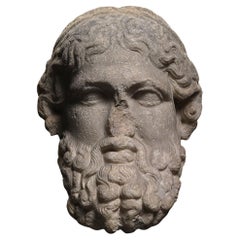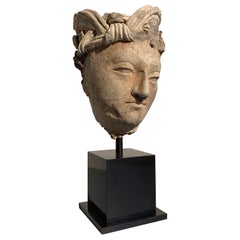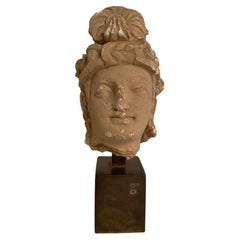Items Similar to A Finely Carved Gandhara Head of ‘Atlas’
Want more images or videos?
Request additional images or videos from the seller
1 of 11
A Finely Carved Gandhara Head of ‘Atlas’
$35,000
£26,434.67
€30,550.67
CA$49,092.86
A$54,596.01
CHF 28,578.49
MX$666,004.92
NOK 359,099.16
SEK 337,779.12
DKK 228,040.89
About the Item
A Finely Carved Gandhara Head of ‘Atlas’
Grey schist
India
3rd - 4th Centuries AD
SIZE: 19cm high, 11cm wide, 12.5cm deep - 7½ ins high, 4¼ ins wide, 5 ins deep
References
Pratapaditya, Pal; ‘Asian Art at the Norton Simon Museum’, Vol. l; Art from the Indian Subcontinent, 2003, pp.68 - 69, no. 35, where Pal illustrates and discusses a Gandharan ‘Winged Figure’ with similar eyes. According to Pal, 2003, p.68, Alfred Foucher was the first to suggest that the muscular figures are ‘yakshas’ in the guise of classical ‘Atlantes’, having borrowed the wings from Victory. (Alfred Foucher, ‘L’art greco-bouddhique du Gandhara’, 1905 - 1951, vol. 1, p. 208.
The finely carved dark grey polished head of a male complete with a refined moustache. Probably portrays ‘Atlantes’ who is often seen in Gandharan sculpture, and loosely based on the Greek god ‘Atlas.
Gazing directly forward, his face is modelled with a serene expression in a stylised ‘Helenistic’ style. His hair is grouped into large curls that cover part of his forehead as well as flowing above and behind his ears. Remains of his turban can still be seen with its individual twisting bands of cloth. His protruding eyes are unusually large, sheltered beneath a heavy lidded brow. The strength and ‘trance-like’ quality of his eyes engage the viewer instantly, the emotive intensity drawn closer through the detailing of the pupils.
According to Pratapaditya Pal, though ‘Atlantes’ figures are often loosely identified as ‘Atlas’, they should be distinguished from the individual in classical mythology who was ‘ordered to support the heavens’ on his shoulders.
Provenance:
Ex Simon Ray Indian and Islamic Works of Art, London 2007
Ex Private collection
- Dimensions:Height: 7.5 in (19.05 cm)Width: 4.25 in (10.8 cm)Depth: 5 in (12.7 cm)
- Materials and Techniques:Schist
- Place of Origin:
- Period:
- Date of Manufacture:3rd - 4th Centuries AD
- Condition:Wear consistent with age and use.
- Seller Location:London, GB
- Reference Number:1stDibs: LU9363239427522
About the Seller
No Reviews Yet
Recognized Seller
These prestigious sellers are industry leaders and represent the highest echelon for item quality and design.
Established in 1989
1stDibs seller since 2023
- ShippingRetrieving quote...Shipping from: London, United Kingdom
- Return Policy
Authenticity Guarantee
In the unlikely event there’s an issue with an item’s authenticity, contact us within 1 year for a full refund. DetailsMoney-Back Guarantee
If your item is not as described, is damaged in transit, or does not arrive, contact us within 7 days for a full refund. Details24-Hour Cancellation
You have a 24-hour grace period in which to reconsider your purchase, with no questions asked.Vetted Professional Sellers
Our world-class sellers must adhere to strict standards for service and quality, maintaining the integrity of our listings.Price-Match Guarantee
If you find that a seller listed the same item for a lower price elsewhere, we’ll match it.Trusted Global Delivery
Our best-in-class carrier network provides specialized shipping options worldwide, including custom delivery.More From This Seller
View AllA Fine Gandharan Head of a Buddha
Located in London, GB
A Fine Gandharan Head of a Buddha
Stucco with ‘earth pigment’
Some old ‘restoration’ to the nose
Afghanistan
3rd Century AD
Size: 26cm high, 14.5cm...
Category
Antique 15th Century and Earlier Afghan Antiquities
Materials
Stucco
European Carved Limestone Celtic Votive Head of a Male Warrior
Located in London, GB
A Large European Carved Limestone Celtic Votive Head of a Male Warrior Wearing a Typical Flowing Moustache Small Beard and Curling Locks of Hair Stiffened with Lime Wash the Slit Mouth Open as if in Command
Circa 1st Century BC - 1st Century AD
Size: 31cm high, 22cm wide, 25cm deep - 12¼ ins high, 8¾ ins wide, 9¾ ins deep / 42cm high - 16½ ins high (with base)
From about 500 BC, first Greek and later Roman historians mention peoples living in a large area of non-mediterranean Europe as Celts. These classical chroniclers seem to have recognised these communities as having sufficient shared cultural traditions to justify their being given a common name, ‘Keltoi’ by the Greeks, and ‘Celtae’ or ‘Galli’ by the Romans. The earliest allusions to Celts by such Greek historians as Herodotus (485 - 425 BC) were followed by Polybius (200 - 118 BC) and Livy (59 BC - AD 17) who discuss the expansion of the Celts from their central European homelands during the 4th and 3rd centuries BC. They document the presence of Celts in Spain, France, Italy, Greece and Asia Minor, specifically central Turkey. They testify to the successful Roman resistance to the Celts in Italy, after the ignominy of the sacking of Rome by them in 387 BC, and describe the huge defeat suffered by the Celts at the battle of Telemon in northern Italy in 225 BC. The Celts in Greece who sacked the sacred site of Delphi in 279 BC were defeated by King Antigonos Gonatas of Macedon in 278 - 277 BC and in Turkey by Altalus of Pergamon in 240 BC. The Celts in Spain fell under the shadow of Rome from 2nd Century BC and the Celtic heartland known by the Romans as ‘Gaul’ was conquered by the Romans under Julius Caesar in the mid 1st Century BC. Britain was not referred to as Celtic by the ancient historians, but Caesar recognised the close similarities between Britain and Gaul especially in their political organisation. Tacitus (55 - 120 AD) and others chronicled the conquest of Britain between 43 and 84 AD some mentioning the fierce nature of the Celts who went into battle naked.
Celtic art therefore belongs to an artistic tradition in the early history of Europe which is no less important than that of the classical world. Art was central to Celtic identity and was closely related to the objects which it decorated. The Celts were used to seeing art as an integral part of their everyday lives.
Provenance:
Ex Finch and Co...
Category
Antique 15th Century and Earlier European Busts
Materials
Limestone
A Rare and Finely Carved Weser Renaissance Stone Head
Located in London, GB
A Rare and Finely Carved Weser Renaissance Stone Head
Stone
Germany
16th Century
Size: 23cm high, 21cm wide, 21cm deep - 9 ins high, 8¼ ins wide, 8¼ ins deep / 33cm high ...
Category
Antique 16th Century German Architectural Elements
Materials
Stone
A Finely Carved Dan Mask
Located in London, GB
A Finely Carved Dan Mask
Of exceptional form, colour and patina
Wood, fibre (braid)
Ivory Coast
Early 20th Century
Size: 25cm high - 10¾ ins high
Provenance:
Ex Guy Montaibou c...
Category
Early 20th Century Ivorian Tribal Art
Materials
Natural Fiber, Wood
$25,000
A Powerful Baule Mask
Located in London, GB
A Powerful Baule Mask
With rich dark ‘lacquered black’ patina, excellent colour with areas of ‘kaolin’
Wood
Ivory Coast
Early 20th Century
Size: 32.5cm high - 12¾ ins high
Prov...
Category
Early 20th Century Ivorian Tribal Art
Materials
Wood
$40,500
An Anatolian Marble ‘Star Gazer’ Figure
Located in London, GB
An Anatolian Marble ‘Star Gazer’ Figure
Marble
Anatolian
Early Bronze Age / Circa 2700 - 2100 BC
Size: 5cm high, 3cm wide - 2 ins high, 1¼ ins high
The highly stylised oval head wi...
Category
Antique 15th Century and Earlier Turkish Antiquities
Materials
Marble
You May Also Like
Sculpted Terracotta Gandhara Head
Located in Atlanta, GA
A lifesize terracotta head in Gandhara style. Based on the style, it is likely from Kushan period Northern India, circa 4th-6th century. The expres...
Category
Antique 15th Century and Earlier Indian Other Antiquities
Materials
Terracotta, Wood
Marble Head of Hermes
Located in London, GB
Roman head of the god Hermes in an archaising style, following a Greek model from the fourth century B.C.. Hermes is depicted in manner typically found on herms, with a full beard of...
Category
Antique 15th Century and Earlier European Classical Roman Antiquities
Materials
Marble
$70,012
Gandharan Stucco Head of a Bodhisattva, Region of Hadda, 3rd-5th Century
Located in Austin, TX
A striking Gandharan molded stucco head of a male Bodhisattva, tentatively identified as Manjushri, ancient region of Gandhara, probably Hadda or surrounding area, 3rd-5th century.
The Bodhisattva is sculpted of stucco in an idealized manner as a youthful male, with soft and kind features, a benign expression on his face. He wears an elaborate pleated turban wrapped around his head, with two sweeping lobes at the front.
His turban secured on one side by a small image of a roaring lion. The lion may be read as a reference to Manjushri, the Bodhisattva of Wisdom, who is often depicted as riding or subduing a roaring lion, a metaphor for taming the wild thoughts of the mind.
Manjushri gazes outwards in a beatific manner from almond shaped eyes, a gentle smile on his lips. The eyes at different levels when looking at the sculpture head on, indicating the original placement of the head was meant to be viewed at an angle.
Remnants of pigments to the eyes, nose, mouth and ears.
Mounted on a custom black metal stand.
Hadda was an important center of Buddhist learning in the early history of Greco Buddhist Gandhara, and at one time may have housed a bone relic of the historical Buddha, Shakyamuni. The sculpture and architecture of Hadda followed Hellenistic artistic conventions faithfully, leading some scholars to believe the distinct Greco Buddhist style of Gandhara was first developed in Hadda before spreading to the rest of the region.
The kingdom of Gandhara was situated at a crossroads of trade and cultures. Being one of the last remnants of Alexander the Great's Empire, the inhabitants of the Greco-Bactrian Buddhist kingdom preserved Greek culture and heritage for centuries after the decline of the Greek Empire...
Category
Antique 15th Century and Earlier Afghan Hellenistic Sculptures and Carvings
Materials
Stucco
Gandharan Stucco Head of a Bodhisattva, 3rd-5th Century
Located in Stamford, CT
Stucco head of a Bodhisattva, Gandhara, 3rd - 5th century AD. Mounted on a custom made brass base.
12 inches high ( head alone 8.2 in ) 5.5 wide 5 deep
Provanance: Ex Sotheby's, old...
Category
Antique 15th Century and Earlier Sculptures and Carvings
Materials
Stucco
Etruscan Sculpture Head, 4th Century B.C., Italy
Located in Girona, Spain
DESCRIPTION: Etruscan sculpture head made with terracotta, the art represents a young man from the 4th century. It's a very decorative piece and the stat...
Category
Antique 15th Century and Earlier Italian Classical Greek Busts
Materials
Terracotta
Ancient Greek Terracotta Antefix in Form of the Head of Artemis Bendis, Taranto
Located in Antwerp, BE
Ancient Greek mould-made terracotta antefix decorated with the female head of the Goddess Artemis Bendis.
Western Greek, Italy, Taranto, early 4th century BC.
Two small feathered win...
Category
Antique 15th Century and Earlier Italian Classical Greek Antiquities
Materials
Ceramic
More Ways To Browse
Antique Atlases
Antique Atlas Furniture
Polish Folk Art
Atlas Figure
15th Century India
Asian Carved God
Pal Antique
Gandhara Sculpture
Gandharan Schist
Mid Century Dining Room Chandelier
Contemporary Furniture Designers
Antique Borders
Style House
Carpet With Border
Study Desks
Vintage Ships
Up And Up Italy
Antique Color Furniture
